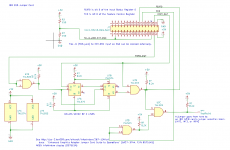I have an Infowindow 4055 display, but no software, or control card. It came from an XT about 25 years ago. I wish I was able to grab the entire system because it might have had the requisite card. In fact, it came from an entire lab of such systems. But this was just one of the spare parts, which is how I got it.
I do not have MCA, so if anyone has the ISA version and software, I would be interested. The other thing is I believe it will require an EGA card. I've debated buying one, but I don't think it's worth it just for EGA. I hooked it up to a CGA card on a 5150, and it's great since it supports both RGB and composite. Also, not sure what I could hook the speakers up to on the 5150, but it makes a nice all in one system.
I would be interested in running the control card with the program interface, because I believe it can drive the touch screen, on screen display text, and speech synthesis supported by the monitor.
Note there is an Infowindow II or some kind of terminal computer version. That is not the same thing as I have, but unfortunately any search turns up that instead and makes searching for the program and card fairly hard. I did see the software pop up on ebay a few weeks ago.

